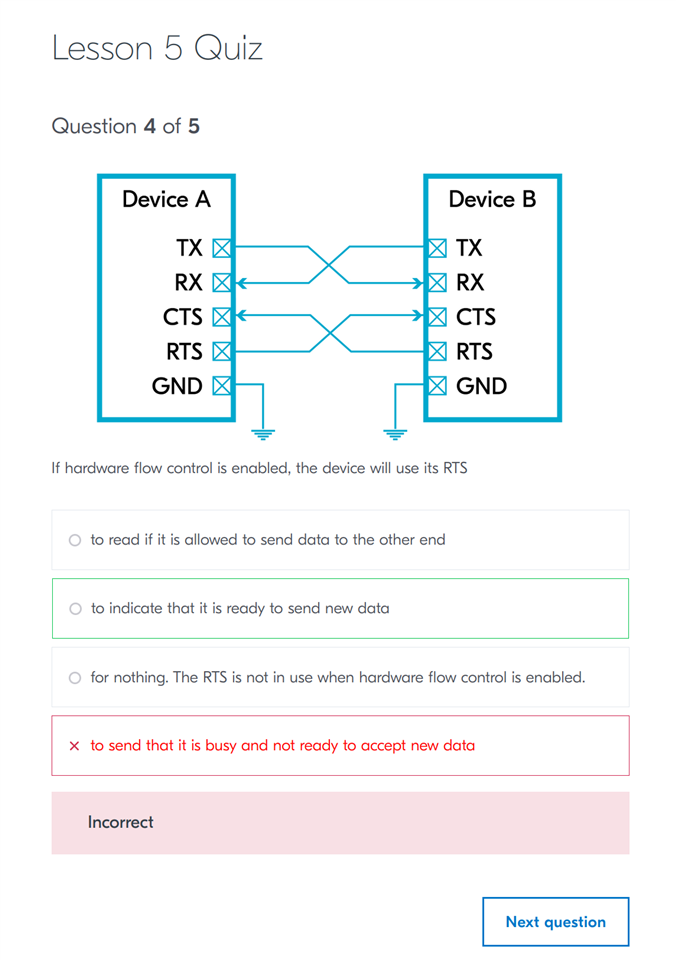I have problem with one question of the lesson 5 Quizz of the "nRF Connect SDK Fundamentals" course (Dev Academy)
Here is the question :

Regarding the name, RTS is "request to send", so RTS indicate that the device is ready to receive and not to send, so the answer 2 seems not the good one.
RTS is used to indicate that the device is busy or not, and ready or not to accept new data. So answer 4 seems to be the closest one to what can be a good answer.
What do you think ?


